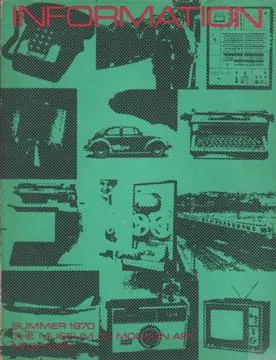Information Art, what a kaleidoscope of modern creativity where data and digital aesthetics converge. This genre, also known as informatism or data art, blends the rigors of computer science, artificial intelligence, and vast data pools from sectors like healthcare and the internet, reflecting our era's information revolution. It's a narrative woven through bytes, presenting a fresh tableau where technology meets human curiosity.
The lineage of information art traces back to practices like information design and informational graphics, long before the digital age ushered in new tools for artistic expression. A pivotal moment for this genre was the 1970 exhibition "Information" at the Museum of Modern Art in New York City, curated by Kynaston McShine. This exhibition marked a seminal point, showcasing how conceptual art began embracing data as a medium for expression.
Today, the practice of information art is rich and varied. Artists like Ryoji Ikeda and Refik Anadol stand at the forefront, transforming raw data into stunning visual and acoustic experiences. Ikeda reduces complex data sets into pure, powerful sensory encounters, while Anadol weaves digital data from cultural institutions into vivid, immersive installations. Their works exemplify how contemporary informatism can synthesize multiple disciplines—visual, audio, performance—to craft artworks that are not just seen or heard, but experienced.
These multidisciplinary approaches often incorporate human-computer interactions, creating installations where art continuously evolves based on new data inputs. This dynamic relationship between viewer and installation reflects informatism's core: an art form that is perpetually in flux, mirroring the endless stream of data that flows through our world.
Furthermore, information art isn't confined to galleries. It spills over into urban spaces and digital realms, inviting us to view our environment and the overload of information surrounding us through a new lens. By analyzing and reinterpreting data from diverse sources—census figures, network signals, digital paintings—artists provide not only aesthetic pleasure but also potent social commentary, challenging our perceptions of the world.
Information art invites us to question and explore, pushing the boundaries of what art can be in this digital age. It's a dialogue between the visible and the invisible, the quantifiable and the abstract. How do you think this evolving art form will shape our understanding of the data that envelops us daily?




.jpg)







No comments:
Post a Comment